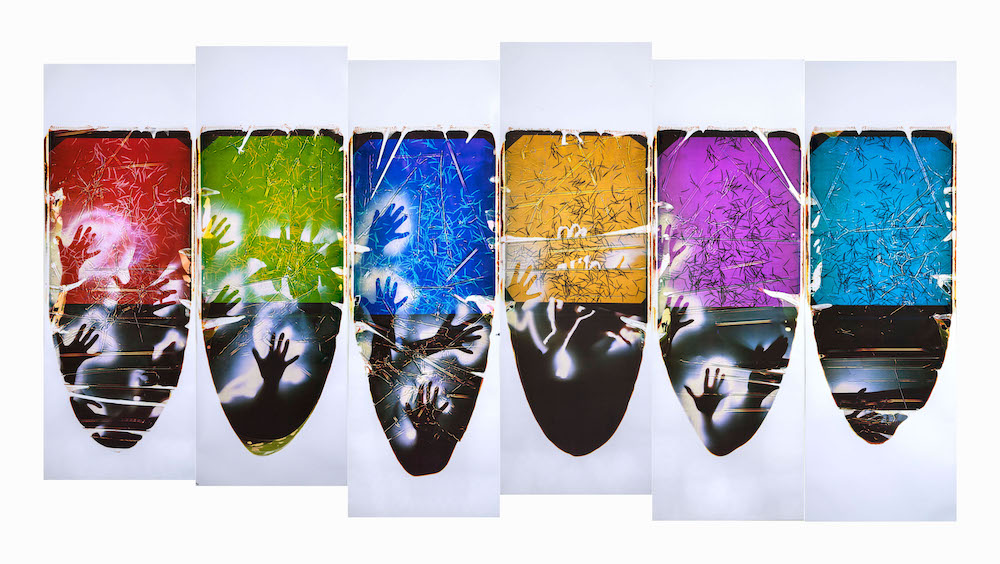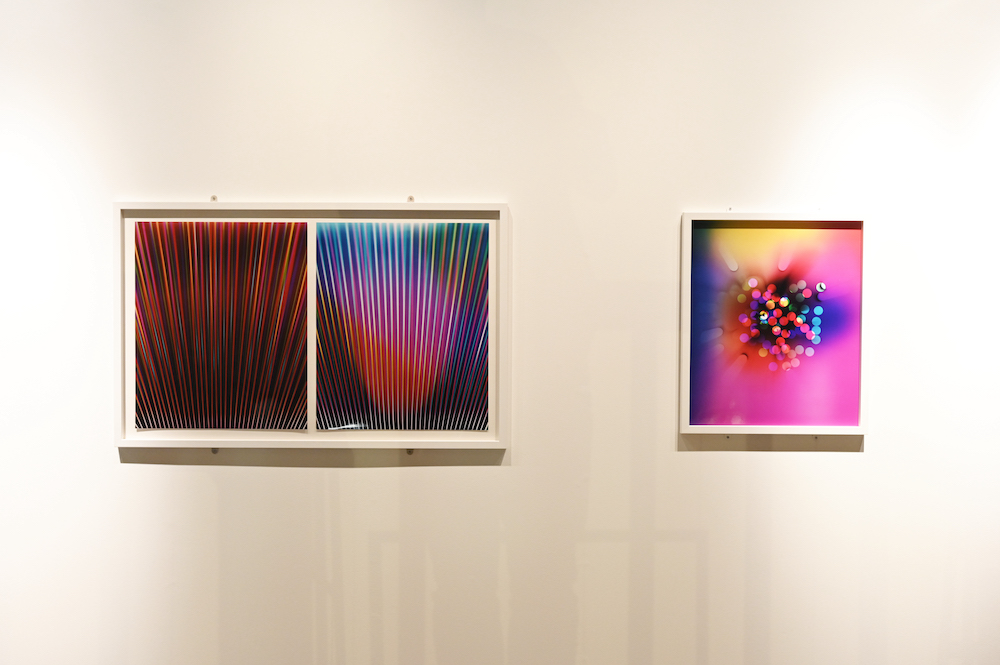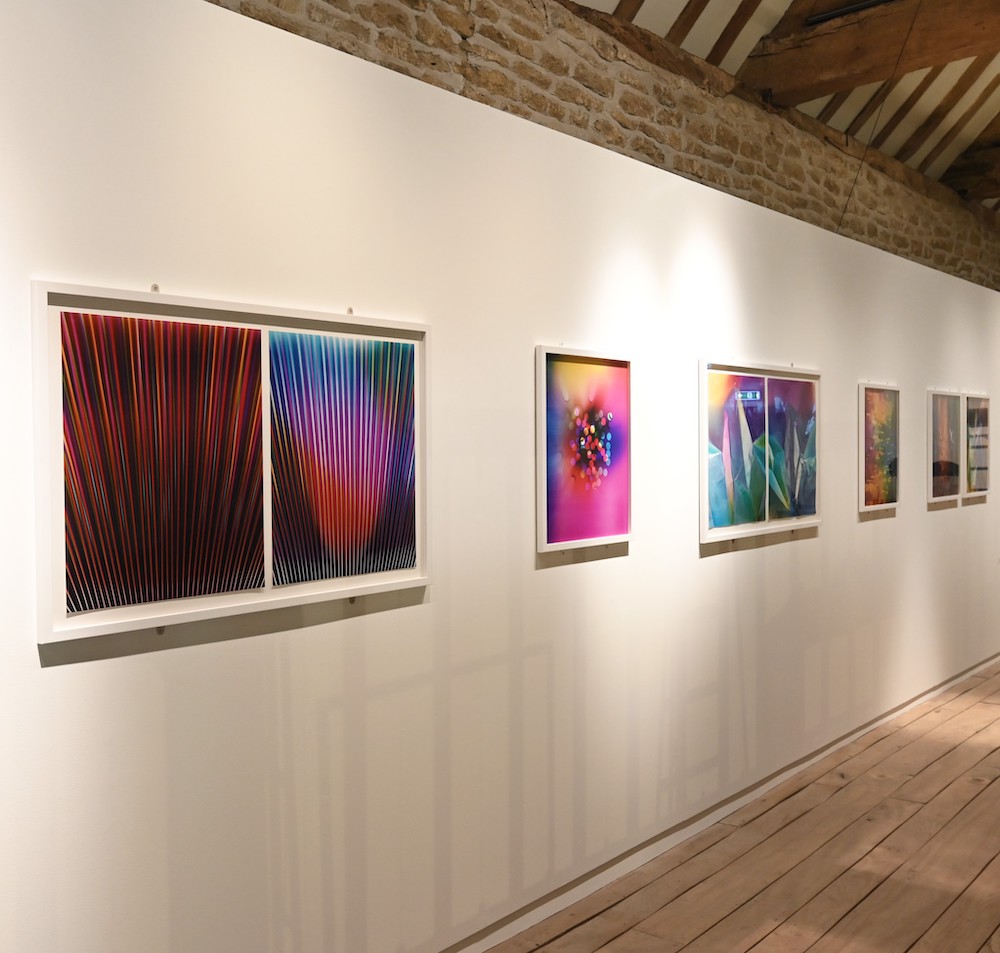Ellen Carey: Light Struck
Light Struck, Ellen Carey’s latest solo exhibition, brings her photograms and giant Polaroid prints to the Fox Talbot Museum in a celebration of light, colour, and photographic innovation.
Ellen Carey is an artist who believes that ‘materials have meaning’. Despite evading the apparent necessity of signifiers – her work depicts ‘process’ rather than subject – her iconic oeuvre is awash with delicate intertextuality.
Pairing Ellen’s idiosyncratic photograms with the early works of William Henry Fox Talbot, Light Struck constitutes a remarkable pentimento of photographic innovation. The exhibition’s location, Lacock, is deliberate; it is the former home of William Henry Fox Talbot, who invented “photogenic drawing” there in August 1835.
The exhibition is presented across two floors, situated beautifully against the exposed brickwork and wooden beams of the Fox Talbot museum. The contents are a whistle-stop tour through the highlights of Ellen’s work, including her iconic 20 x 24 Polaroid pulls created in collaboration with John Reuter, Director of 20 X 24 Studio.
Manipulating the processes of the studio’s legendary 20 x 24 Polaroid camera, Ellen’s ‘Pulls’ are the result of the Polaroid’s dyes being pulled out of the camera’s rollers as the print moves downwards out of the camera. The results are a negative-to-positive contact print which is peeled apart, upon which Ellen generates a lustrous craquelure by folding and crushing the print in the darkroom.
It is fitting that, in Light Struck, Ellen recalls the photographic pioneers who first developed the technology – such as Talbot, Talbot’s contemporaries Louis Daguerre and Anna Atkins, as well as Polaroid inventor Edwin Land. Her work contemplates the origin and development of photography’s distinctive light, despite her working intuitively in total darkness: ‘Photographers use light in all different ways – silhouette, shadow, outline, reflection’ she says, ‘however, I often cannot see light while I work [in the darkroom], leading me to wonder what the light does on its own, what are light’s first traces?’
Within her art, a kaleidoscope of associations converge; fireworks, fractals, nebulas. While the vibrancy of the work denotes an almost futuristic aesthetic, it equally possesses an earthen tangibility echoed by Talbot’s use of natural forms. The photographers visually collaborate in Crush & Pull with Hands, Penlights, and Spruce Needles, a new series produced by Ellen for Light Struck.
The results are rapturous; referencing Talbot’s A Cascade of Spruce Needles, an early camera-less photogram, spruce needles shower a pattern of overlapping hands in a temporal mosaic which merges past with present. Uplifted, these hands reflect the euphoria with which Light Struck is largely infused. Here is photography – as it was, is, and could be – immediate, and unbridled.
Light Struck is on display at the Fox Talbot Museum, Lacock, until March 2024.
By Katherine Riley















